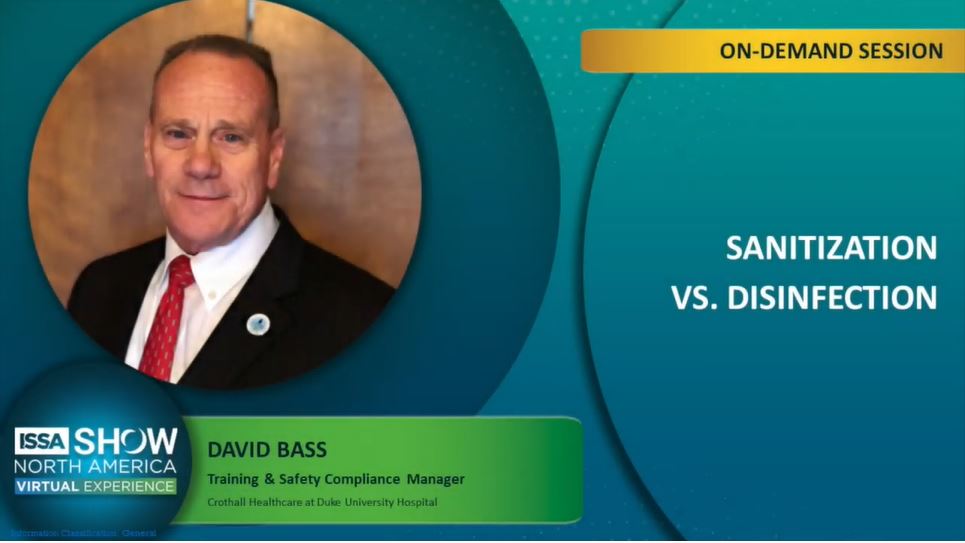If you registered for the ISSA 2020 Virtual Show, you might have been a little overwhelmed by the sheer number of talks and presentations. I know I was. I didn’t know where to start. This article is intended to act as a taste of the actual presentation. Taking an hour out of your day to watch a video might not sound like a good use of your time as a business owner. So, by the time you read this, you might decide for yourself if you want the full experience. If you weren’t sure if you wanted to attend the virtual show itself, then this article will serve as a way for you to definitively decide. Many of the presentations and products on display will be available until March 31st, 2021.
This short presentation was given by David Bass, the training and safety compliance manager for Crotholl Healthcare and works in environmental services at Duke University Hospital. In this talk, David talks about the differences between sanitize vs disinfect.
He started off by showing the definition of both of those terms. Sanitize means to free from dirt, germs, etc. as by cleaning or sterilizing. Disinfect means to cleans of infection; destroy disease germs within.
David asked us to think of the why, where, who, and what of this topic. In terms of why we live in a very global time period, increases in population, significant humanitarian needs in relation to infections, and because of all of these, there are more global effects. As diseases used to be epidemics (local) they are becoming pandemics (global).
The primary method of disinfectant are various chemical products. in the 1800s there were phenols, then chlorides in the 1920s. Alcohols became prevalent in the 1950s and aldehydes came to be in the ’60s soon followed by Quats in the ’70s. It is worth noting that the 1980s and ’90s saw an increase of “super germs”.
There are many risks involved with these chemical products, however. For instance, phenols are harsh on both surfaces and bio-tissue. Chlorides are strong, having prolonged exposure also damages surfaces with direct exposure damaging bio-tissue. Alcohols are effective against many pathogens- BUT NOT ALL. It is also fast-acting, but short-lived. One must also sanitize the region first.
Aldehydes accidentally develop antibiotic microbial resistance and can cause personal health risks such as hormone issues. Quats aren’t as harsh but have longer dwell times. Some suspect there may be environmental effects to consider. Peroxides have moderate strength and less damage risk. Mainly only odor complaints.
David then posed the question, “How do we decide what is our best course of action?”
He says, look at what is to be “best practices” for our areas of responsibility. In order to do this you will have to examine your operation, selecting a product that fits, and integrated approaches such as area types, equipment, and surfaces.
Ultimately David says this isn’t rocket science, but it IS science. You have to know the areas and surfaces you’re dealing with as well as the products you will use for specific jobs. If you want to learn more, watch the whole video by clicking the link below.
Sanitization vs. Disinfection
For more articles, subscribe to our newsletter!






